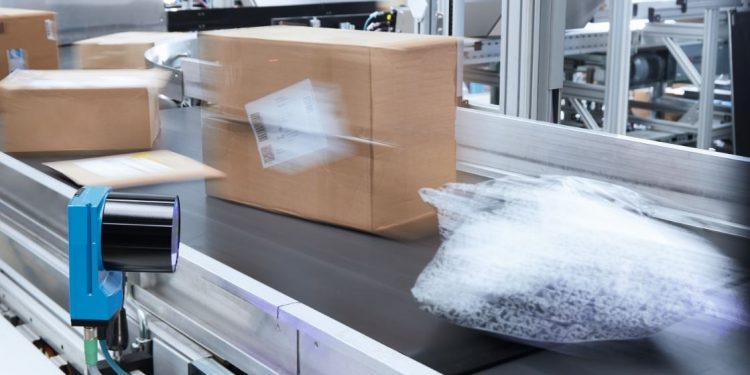Know Your Barcode Scanners

Barcode scanning isn’t new in the warehousing or manufacturing environments. In fact, you may already have one sort or another within your facility. But if not—or if you’re considering adding more to your operations, there are three main types to choose from. Knowing what each is designed for and how it can help your operations is important before making a commitment.
Have a look at each and where it might fit into your facility:
Laser line scanner
This is the original, one-dimensional type of barcode scanning, often considered old technology today. However, it is an economical choice and when you’re processing 1D barcodes, can deliver a high level of performance and gains. For SLAM (scan, label, apply, manifest) operations, that often amounts to a fixed position scanner on a conveyor that can scan items on the outbound side. Laser line scanners can also be used as handheld scanners for employees to manually scan cartons before printing and applying labels. Though labor intensive, this is considered to be an economical option.
Matrix camera scanning
Matrix Cameras are the newcomer to barcode scanning. Over the past decade, technological advancements have broadened the capabilities of Matrix cameras. Its advantages include the ability to take a snapshot at a high speed and then decode the image. This barcode scanner supports both 1D and 2D barcodes, ensuring future compatibility for your customer. Depending on the size of the area you are scanning and image capturing, you may need multiple scanners per side. If you are working with a 48-inch conveyor, for instance, you may need two to four scanners to capture the full field of view. In fact, with very large items, it may take up to 30 images from three different cameras to understand the current state of the object. This isn’t a drawback to the option, necessarily, but it does require some added expense and is something to take into consideration. With improved quality to your scanning, however, you can quickly offset the initial investment.
Line camera
This type of scanning operates as a single line and as the product flows through, assembles the image and gives you a high-resolution image of the object. This holds true whether you have a one-meter-wide conveyor or something smaller. Rather than receiving a film “strip” or pieces of images, you get one image of the entire object. This is preferred when scanning video coding or OCRs. A line camera can scan a single side, or all 6 sides of an object. Due to its unique characteristic of creating and processing a high-resolution image from a single line, the line camera has become the industry-preferred solution for bottom reading on conveyors. Although it may be a more expensive solution, the line camera delivers the highest quality images.
Barcode scanning technology is essential in the warehousing and manufacturing industries. Understanding the different types of barcode scanners available, including laser line scanner, matrix camera scanner, and line camera, will help you choose the best solution for your operations. Whether you’re looking for an economical option or the highest quality images, barcode scanning technology has advanced to meet the needs of different facilities. Make sure to consider your specific requirements before making a commitment to a barcode scanning solution.
The MHI SLAM Industry Group is conducting a survey to better understand the challenges and opportunities facing the ecommerce fulfillment operations. As a practitioner in this field, your insight and experiences are of utmost importance to us. We would be grateful if you could spare a few minutes to share your thoughts and opinions through this survey. Your participation will contribute to shaping the future of the industry.
To learn more about MHI’s SLAM industry group: www.mhi.org/slam
More information about Scanning, Labeling, Applying, Manifesting:
Handling Every Type Of Packaging
Best Practices For The Last 100 Feet Of Fulfillment
Why A Vertical Reciprocating Conveyor Can Play A Critical Role …
Better Data Equals Better Labeling And Tagging
Podcast: Transitioning From Manual To Automated SLAM (The Last 100 feet)
Offsetting Labor Shortages with SLAM



